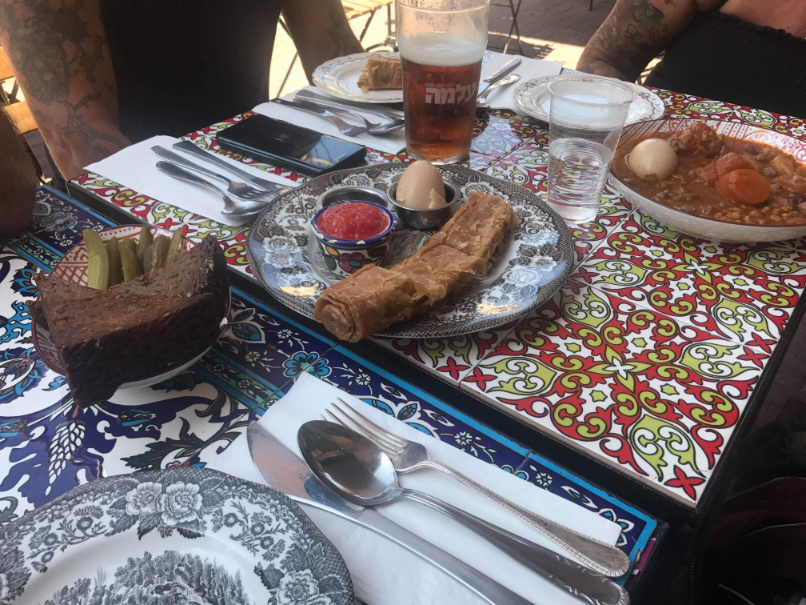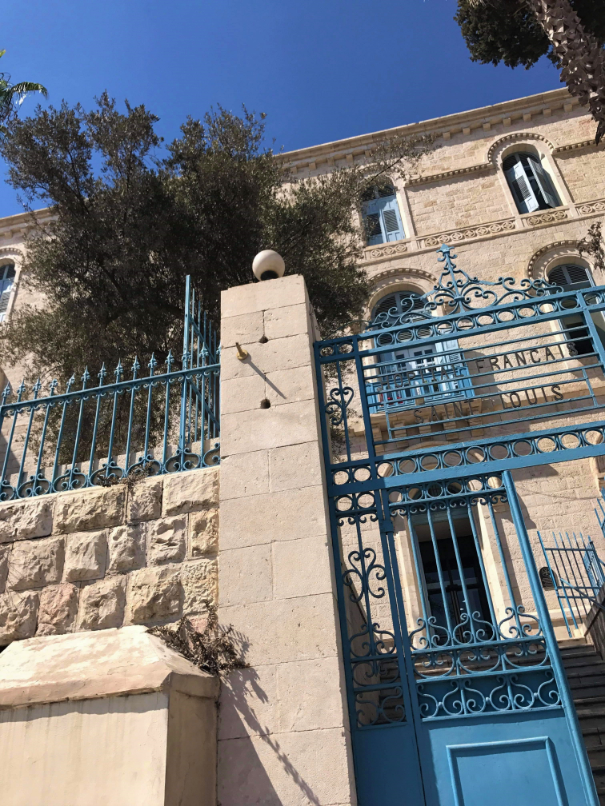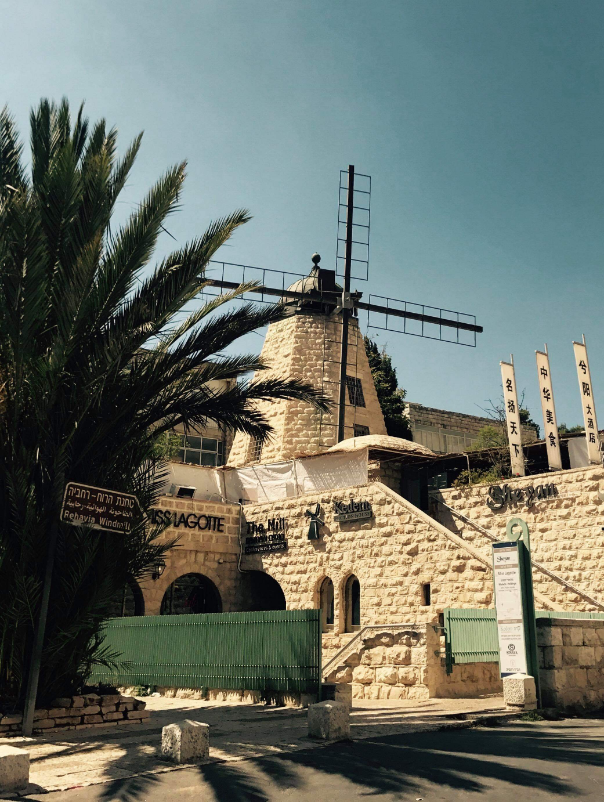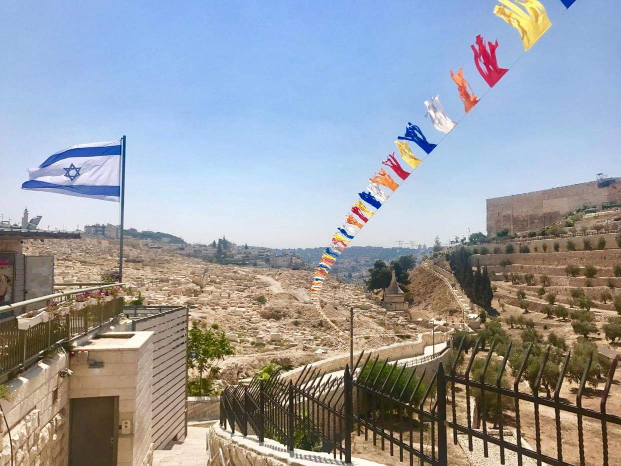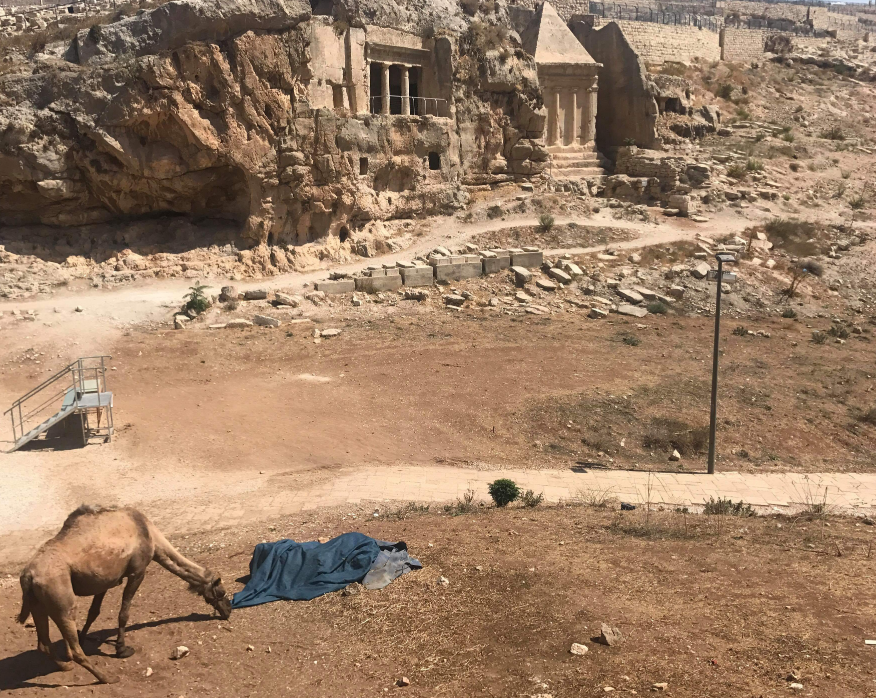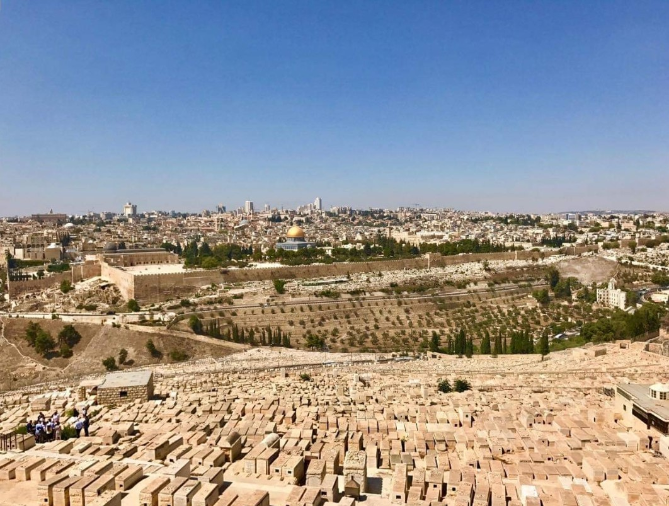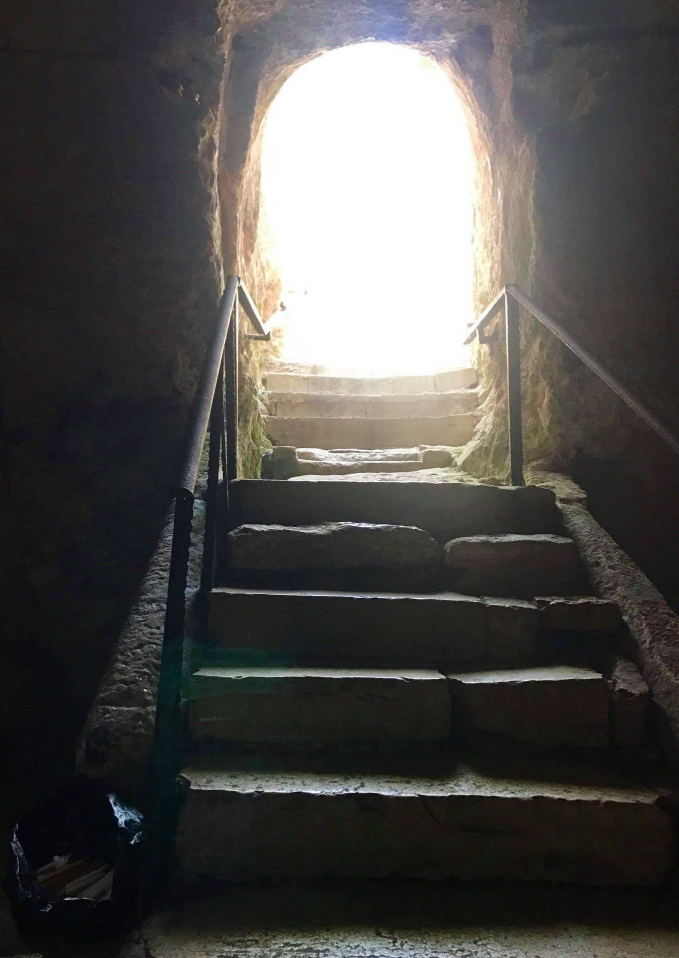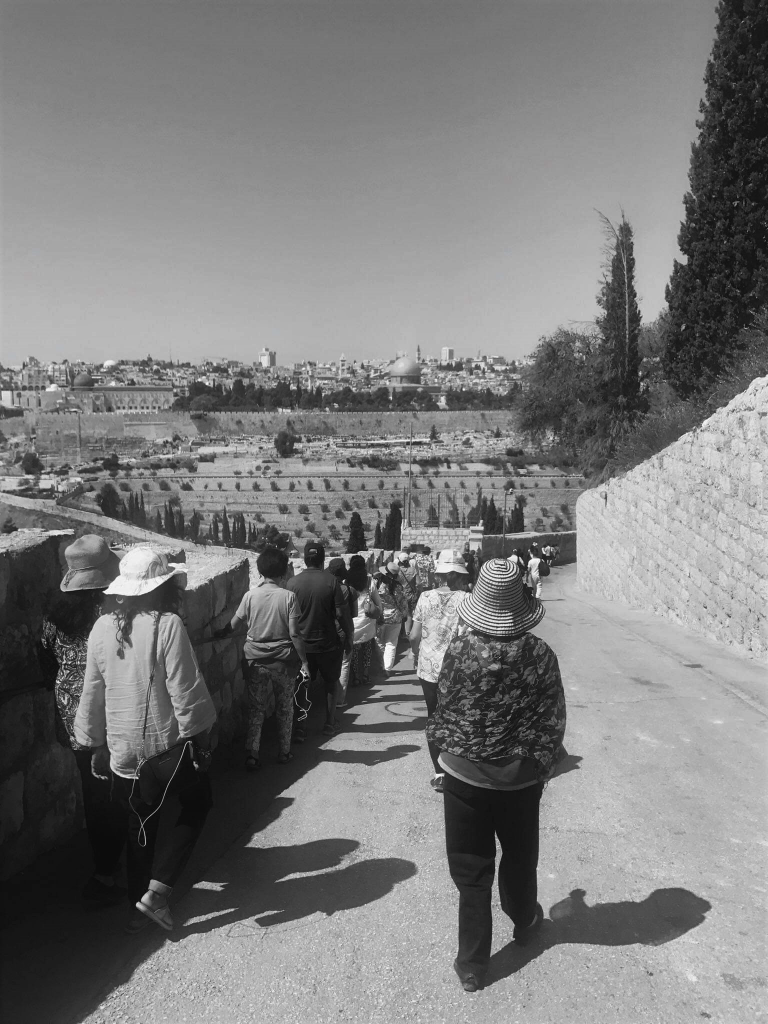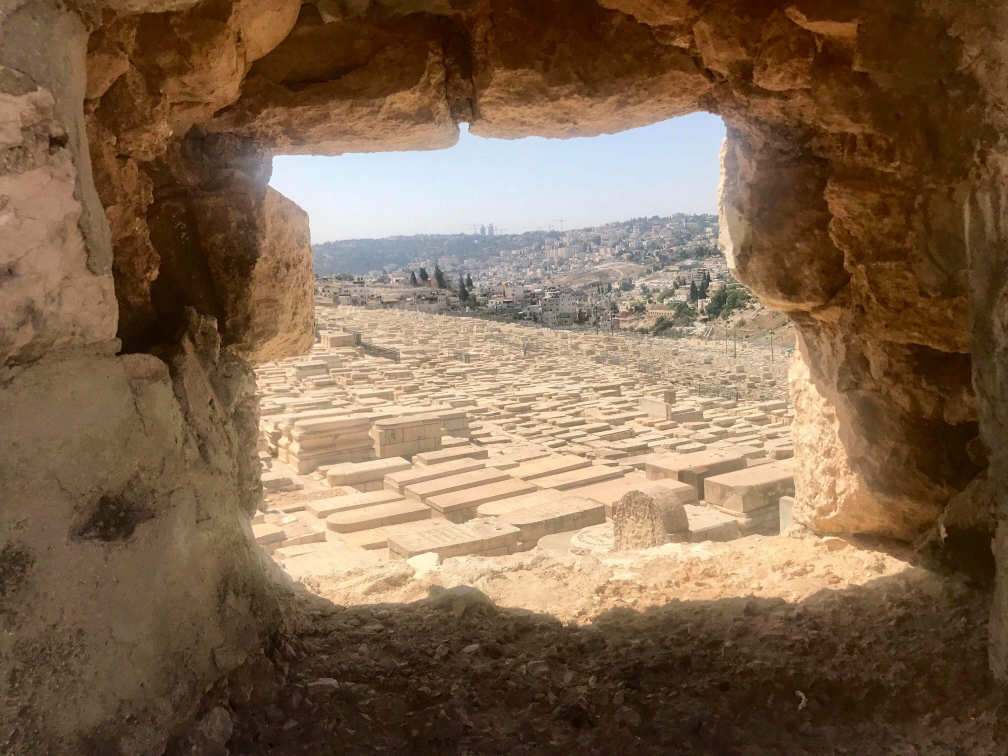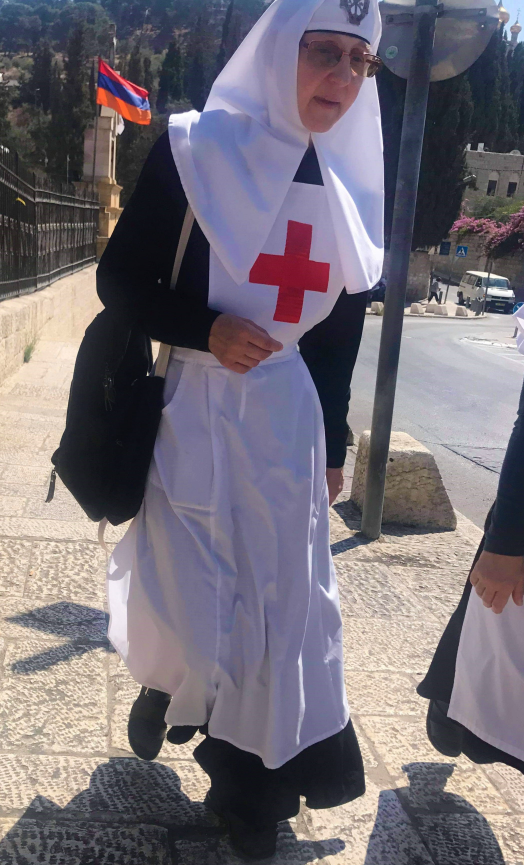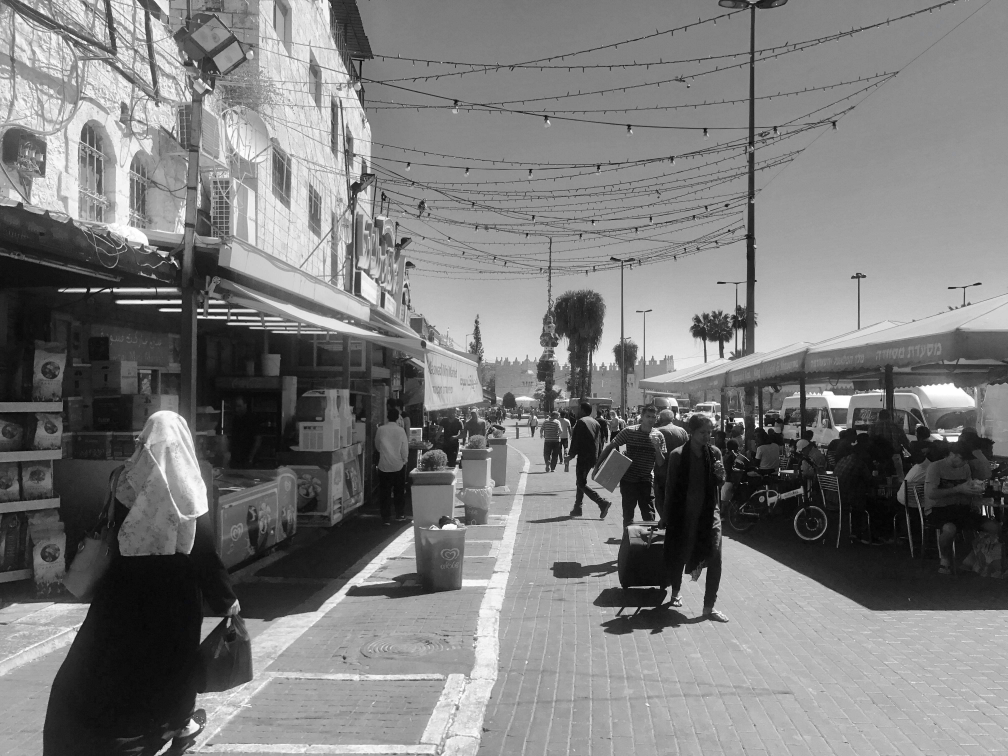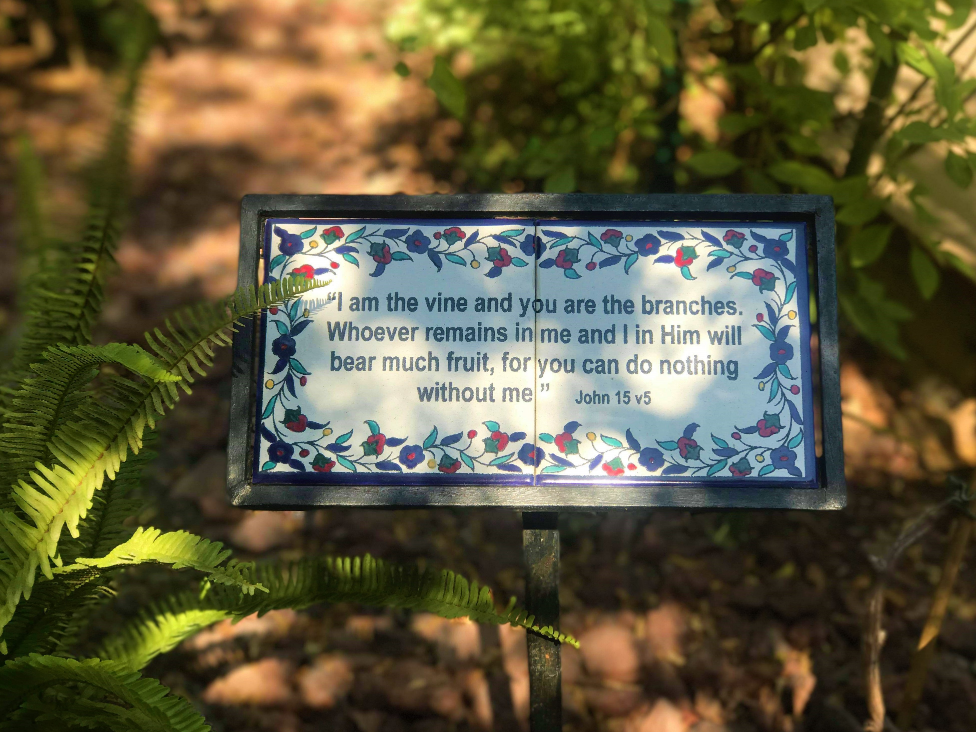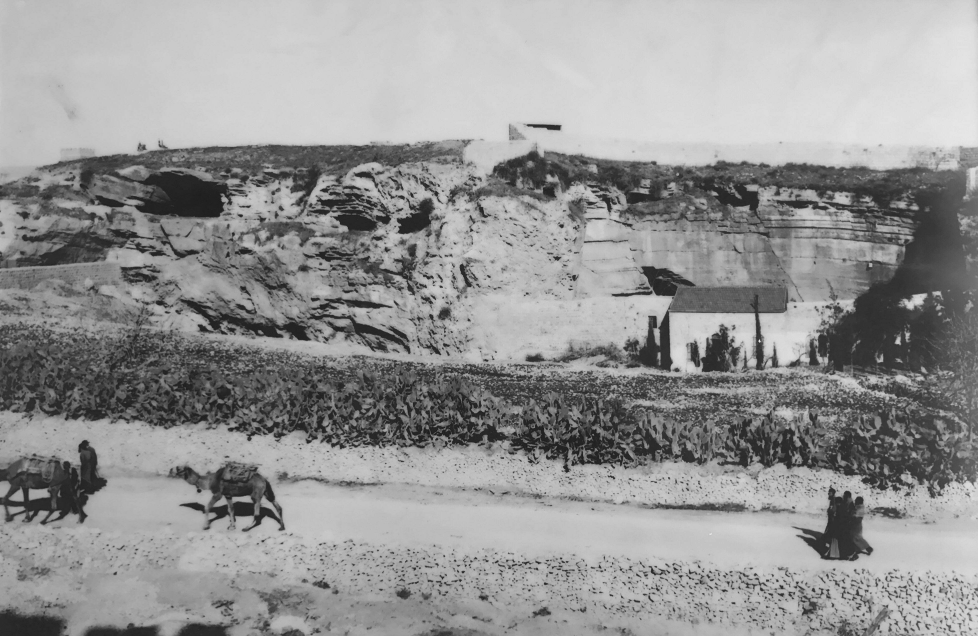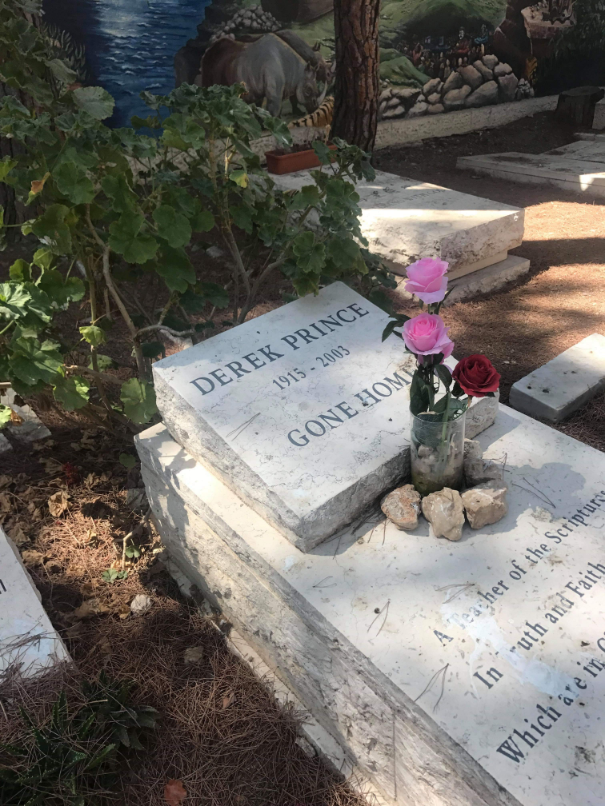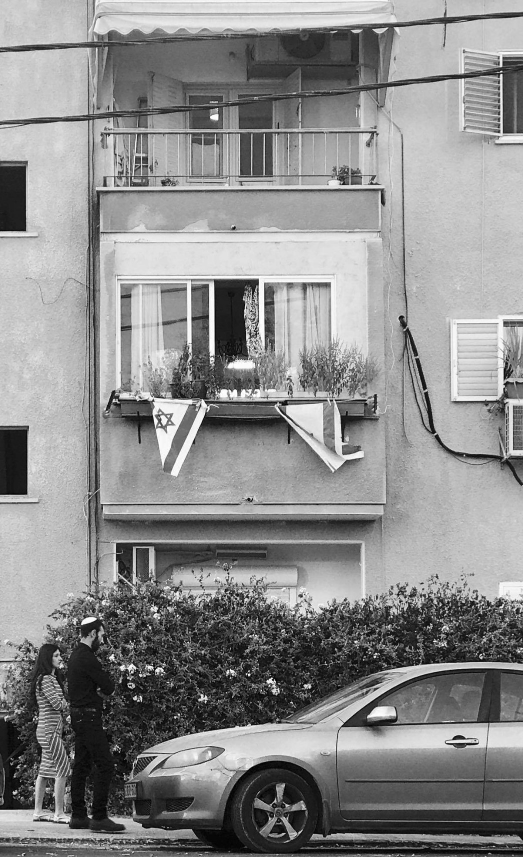Jerusalem
In Israel the Sabbath is strictly observed. Due to the fact that no one is allowed to do any work (including cooking) there are very few restaurants open. Meals are prepared the night before that can be eaten cold or warmed up.
We happened to arrive in Jerusalem on the Sabbath and hungry! In search of food we found one Lebanese cafe serving traditional Shabbat food. This consisted of: Noodle Krugel, Cholent (type of Jewish stew) and pastries!
Sabbath Meal in Jerusalem
Onwards in our journey to Jerusalem.
Between West and East Jerusalem, facing the Old City stands the Saint Louis French Hospital. Since 1852, the Sisters of “Saint Joseph of the Apparition” have operated the hospital which now specialises in palliative care for Jewish, Christian and Muslim patients with terminal illness.
Saint Louis French Hospital, Jerusalem
Other Details, optional
Rehavia Mill was built by the Greek Orthodox Church to provide flour and bread to the poor, this mill used a combination of engine-power and wind. When the steam-powered one began to operate in the German Colony in 1873 it went out of use. Today it is a small shopping centre.
Rehavia Mill
Other Details, optional
The Kidron Valley separates the Mount of Olives from the eastern wall of the Temple Mount and carries on all the way to the Dead Sea, a total of 20 miles. The Gihon Springs naturally filled this valley, but early inhabitants of Jerusalem diverted the water into pools and channels to be used by the city. The Kidron is mentioned 11 times in the Bible including the time King David fled across this valley to escape his son Absalom in 2 Samuel 15:13-30. Today there are many tombs and graves in the Valley.
Absalom's Tomb in the Kidron Valley
Absalom's tomb can be seen in the top, centre, right of the picutre, whilst a camel desperately strains to eat of the hay under the blue blanket
The Mount of Olives separates the Judean Desert from the city of Jerusalem. It is now a Jewish cemetery, but prior to this it was a place of prayer. King David would often prostrate himself there. The Jewish cemetery on the Mount of Olives is the largest and most important Jewish cemetery in the world, extending over 250 acres and contains the tombs of the infamous dead of the nation for over 3,000 years. They are buried there as Jewish tradition dictates that the beginning of the resurrection process will take place on the mount at the end of days and that those buried on the mount will be the first to arise to everlasting life.
The Mount of Olives
Looking across from the Mount of Olives to the Old City of Jerusalem, the Jewish graves in the foreground
The ‘Tombs of the Prophets’ are a catacomb. Inscriptions above the burial places show that the tombs were used for the burial of foreign Christians in the 4th and 5th centuries AD. The catacomb has an unusual plan, with a central circular chamber and radiating fan-shaped corridors leading to the burial places (kokhim). On entry you recieve a candle to walk the route to the open graves.
Inside the Tomb of the Prophets
An eerie experience but a welcome relief from the heat outside.
Camel resting on the Mount of Olives
During Jesus’ time, the Mount of Olives was covered with olive trees, giving it its name. This mount is not only a geographical link between the desert and the lush hills of Jerusalem – it is also the spiritual link between heaven and earth or life and death. It was here that Jesus encouraged His disciples giving them their instructions for the time after He would be crucified. The Olivet Discourse is another infamous sermon taught here in which Jesus prophesised what would come in the last days. At the bottom of the Mount of Olives is an ancient olive garden, the garden of Gethsemane, where Jesus spent the night before He was arrested.
Tourers descending the slopes of the Mount of Olives
Eastern Orthodox nun near the site of the garden of Gethsemane
Called “Sultan the Magnificent” by Westerners Sultan Suleiman, ruler of Turkey, was an astute politician, talented administrator and an outstanding military strategist. In 1517 he conquered Jerusalem. At that time there were no fortifications protecting the city as the Crusaders had demolished the walls during their assault in the 11th century and 100 years later, Saladin destroyed what was left. Legend has it that some years later Suleiman had a nightmare, in which roaring lions chased him through a field, caught him, tore him to pieces and greedily devoured him. Waking up in a cold sweat, Suleiman cried out for his counsellors. “What do you make of this horrible dream?” They replied, “It means that you must do something for Jerusalem,” they explained. “You must rebuild its crumbling city walls.” Whether or not the story is true, in 1538 he built the four-kilometer long, 12-meter high walls that still surround the Old City today.
Sultan Suleiman Street
Along Sultan Suleiman Street Leading to the Garden Tomb cafes and stalls line the route.
The Garden Tomb
In 1883, British soldier, General Charles George Gordon, went on extended leave in Jerusalem. A devout Christian, he stayed for a while at what is now the American Colony Hotel. One day, looking north, he caught sight of a cemetery on top of a cliff. Beneath, in the rock, there were two caves. In the late afternoon sun, the cliff with its cavernous “eyes” seemed to resemble a skull, and he became certain that this was Golgotha (Calvary) where Jesus was crucified. On further investigation he discovered an ancient tomb and a garden behind the hill, each suited to the New Testament description of Jesus’s burial place.
The Place of the Skull or Golgatha or Calvary
This old photo is on display from the garden tomb area looking toward the skull on Golgatha
Alliance Church International Cemetery, located in Jerusalem, is a unique graveyard where many of the heroes of faith have been laid to rest.
Other hereos of the faith buried here are: Rev. John Stanley Grauel, considered to be one of the people directly responsible for the emergence of the state of Israel; Charles T. Winters, assisted Israel in their war for Independence by supplying several WWII planes. He had to spend time in prison as a result of his heroic efforts to help Israel.
CemPark, Jerusalem
Lining the football-field-sized cemetery’s internal walls is a colourful mural depicting the stories of the Bible from Genesis to Revelation. Carl and Patricia Solveson have spent six and a half years painting the colorful scenes for people to connect with this magnificent love story contained in the Bible.
From Genesis to Revelation the paintings tell the story
Jerusalem, Holy City of the Future
Again the word of the Lord of hosts came, saying, “Thus says the Lord of hosts: ‘I am zealous for Zion with great zeal; With great fervor I am zealous for her.’ Thus says the Lord: ‘I will return to Zion, and dwell in the midst of Jerusalem. Jerusalem shall be called the City of Truth, The Mountain of the Lord of hosts, The Holy Mountain.’ “Thus says the Lord of hosts: ‘Old men and old women shall again sit In the streets of Jerusalem, Each one with his staff in his hand because of great age. The streets of the city Shall be full of boys and girls Playing in its streets.’ “Thus says the Lord of hosts: ‘If it is marvelous in the eyes of the remnant of this people in these days, Will it also be marvelous in My eyes?’ Says the Lord of hosts. “Thus says the Lord of hosts: ‘Behold, I will save My people from the land of the east And from the land of the west; I will bring them back, And they shall dwell in the midst of Jerusalem. They shall be My people And I will be their God, In truth and righteousness.’ Zechariah 8.

